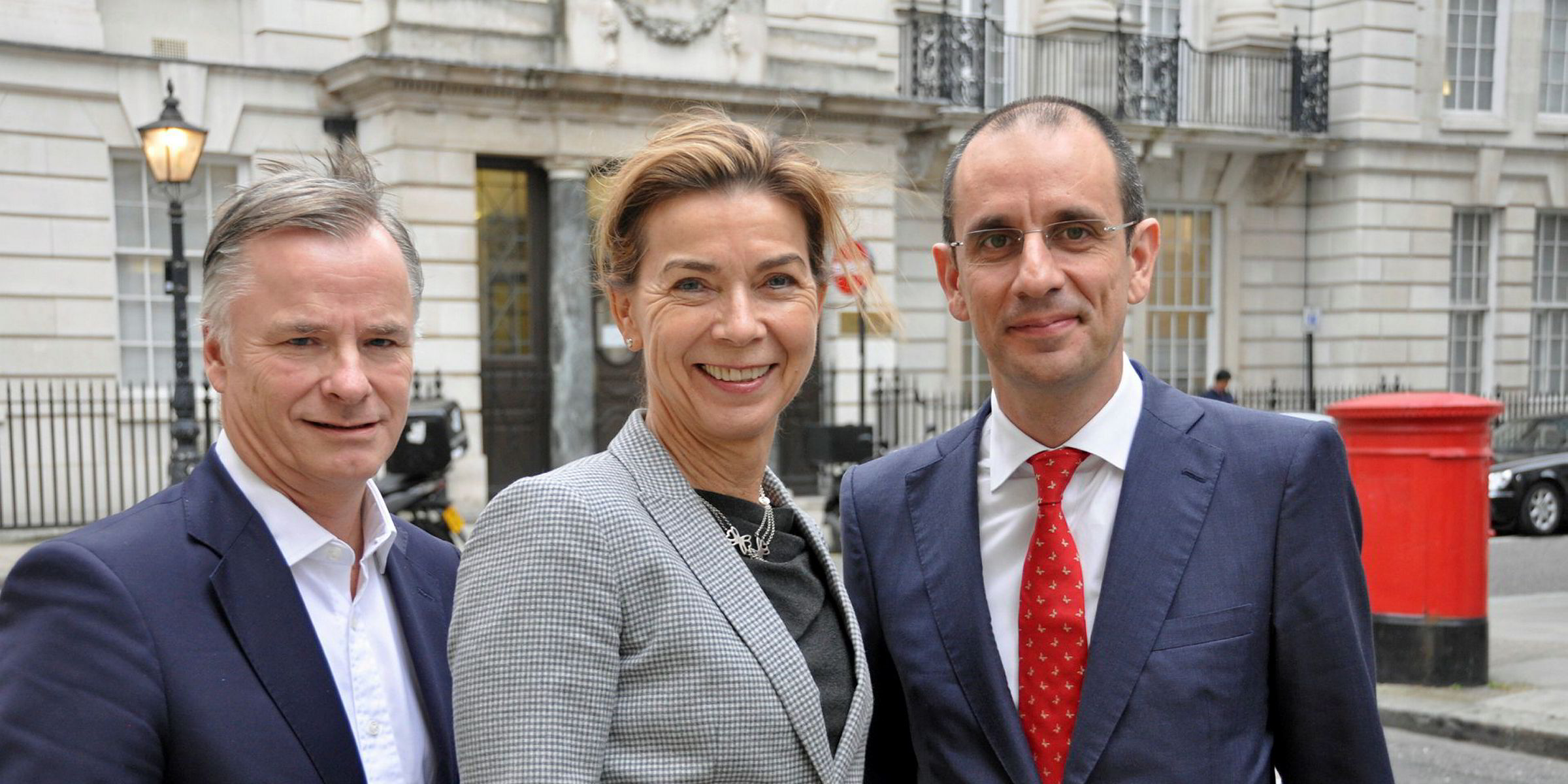Ten years of poor results and loan losses have hobbled the lending ability of most banks that traditionally provided the lion’s share of capital to support shipping.
Demands from regulators and bank shareholders have squeezed the business from both sides. Investors want better returns, while regulators have tightened capital requirements especially against higher-risk activities such as ship finance.
As a result, shipowners, facing an estimated capital capacity shortfall of around $30bn per year, have been forced to look elsewhere to more expensive bond, equity and leasing markets for finance.
But now, in the face of these conflicting pressures, DNB is attempting to turn circumstances and its skills to the advantage of the clients it chooses to continue to service.
As Norway’s biggest financial institution and one of the world’s leading shipping and offshore banks, it has recently reorganised its activities with the intention of delivering a better range of capital provision services to clients despite a shrinking loan book.
“We are capital providers. Lending in one important product, but it is not the only product,” said Kristin Holth, head of DNB’s newly created Ocean Industries division.
“Our global business model is not just the lending part. It is also as a financial advisor to our client companies globally whether for loans, equities, bonds, or leasing.”
DNB has progressively cut its shipping loan exposure by nearly half in recent years from $21bn in 2012 to $11bn at the end of September this year.
Oil and gas-related loans are down around 30% in the same period from $19bn to $14bn. Shipping now represents about 4.8% of DNB’s overall portfolio and oil and gas 6%.
In response, DNB has now expanded its old shipping, offshore and logistics (SOL) division formerly headed by Holth, with the addition of its oil and gas, oilfield services and seafood operations to create an Ocean Industries unit.
The logic is to grow the company by bringing together activities linked by clients with common owners, investors and technologies, and all being highly cyclical and volatile.
‘Industry synergies’
“We see there are so many parallels, so many commonalities between these industries,” Holth said. “So, for us, it is a way of seeing synergies between industries that are part of the same value chain.”
Some 15% to 20% of DNB’s total business is within the shipping, offshore and seafood industries, and 70% to 80% of what it transacts internationally.
And with around 70% of Norway’s exports accounted for by those sectors, ocean business has attracted policy discussion in the Norwegian government.
“This is not just window-dressing, this is not just a reorganisation,” Holth said. “It really fits into what we have been doing for many years and now plan to further develop.”
DNB is bringing together industry knowledge with its global origination and distribution skills for loans, bonds and equity.
Among the five unit heads reporting to Holth are new global head of shipping Christos Tsakonas and new global head of offshore Bern Blikstad.
“The markets are becoming much more complicated and the needs of the clients are becoming much more sophisticated,” Tsakonas said. “Lending is just one of the products. It will be the dominant product — also going forward — but it is just one of the arrows in the quiver.”
Reorganistion of DNB’s shipping and offshore activities is part of a broader focus across the group for a higher return on equity and more effective allocation of capital.
DNB chief executive Rune Bjerke told the bank’s capital market day in November that a 12% return on equity in 2019 was “our main priority”.
Although total impairment losses will be up to NOK 18bn in 2016/2018, much of which is shipping and offshore, Bjerke believes the bank’s strong balance sheet will enable it to deliver on its promises.
Pareto Securities analyst Vegard Toverud increased his earnings forecast on the reduced loan loss guidance and maintained his “hold” recommendation.
DNB’s Ocean Industries division stands alongside its Nordic Corporates and International Corporate branches, which are part of the bank’s large corporates and international arm, headed by former shipping head Harald Serck-Hanssen.
He has committed to lifting return on equity by transforming the way the large corporate arm does business.
He intends to rebalance the portfolio towards better risks, allocate capital for higher returns and increase capital turnover. Contract tenor has already been cut from four years in 2014 to 3.2 years today, while the share of loan syndication has risen from a historic average of about 50% to 73% today, close to the target of 75%.
As part of the process of focusing on profitable business, DNB is also creating a new “non-core division” at the start of 2018 comprising $10bn in offshore and shipping loans, with a mandate to speed up exit from the holdings.
Some 30% of the new division’s portfolio is subject to restructuring, but less than 20% is non-performing, according to details released at the bank’s capital markets day.
Michael Parker, Citigroup’s global industry head for shipping, estimated earlier this year that there was around $150bn of distressed bank debt, mainly in the hands of German banks.
Holth says a managed reduction in its portfolio will enable DNB to have appropriate structure for the future.
“We have slowly and steadily reduced the portfolio to make sure we have the right clients, and to have the right portfolio to have the right return on equity,” Holth said.
“It’s been a planned process but, at the same time, we are building so we can still have a leading position in all the industries with the value added services we can deliver.”
Blikstad, global head of offshore, said: “We want to be more relevant for our clients. We have industry competence in addition to the capital so it should be interesting to talk to us about how to grow your company. We can be a strategic partner rather than just a lender.
“After all, we’ve been in shipping and offshore for 30 years so we know a little bit about it.”





